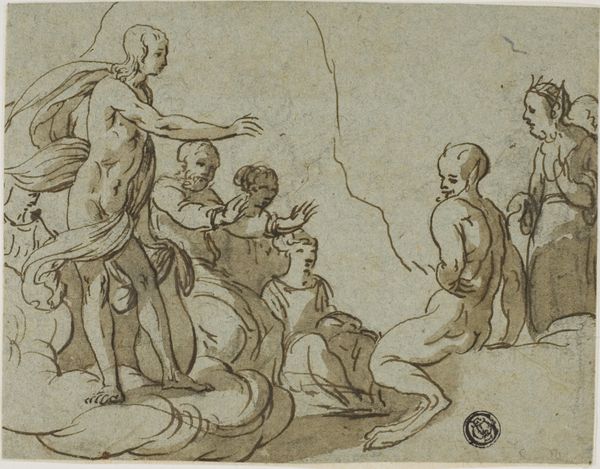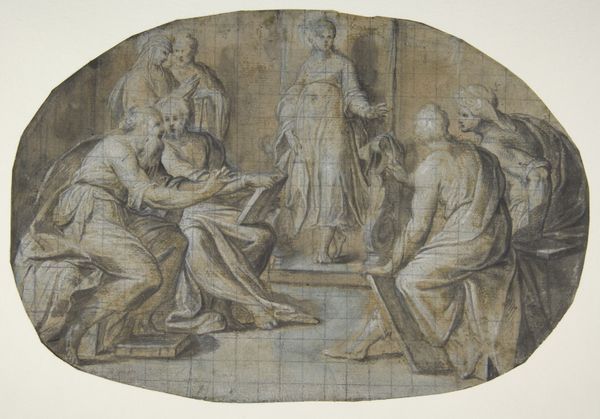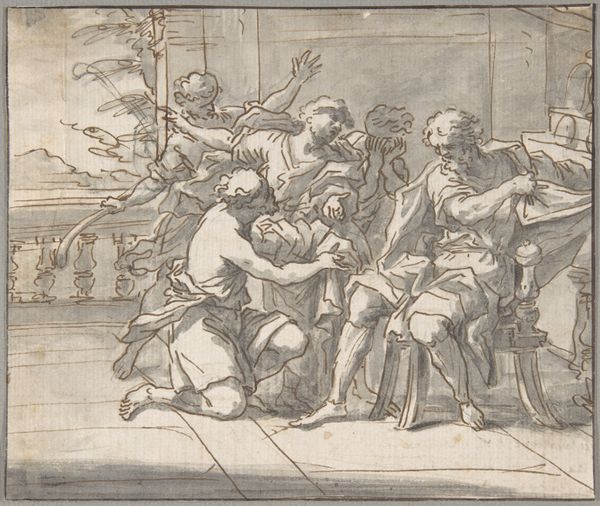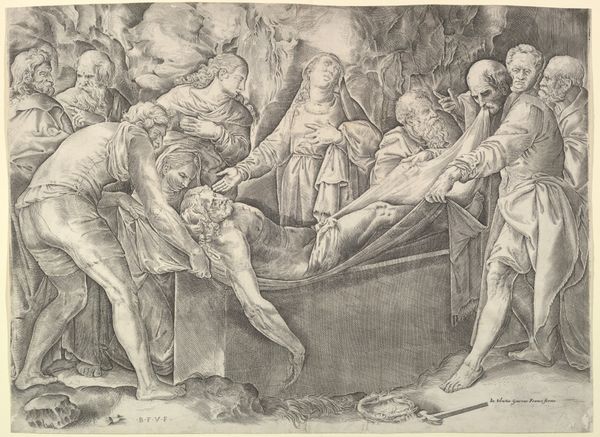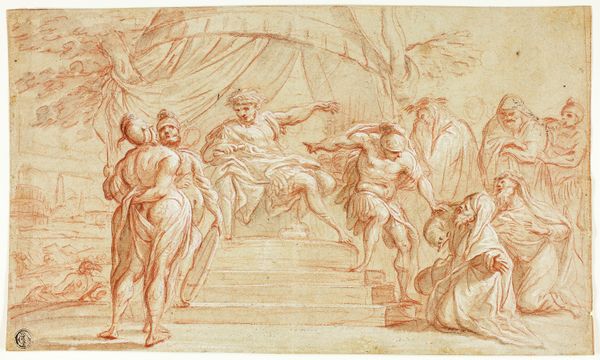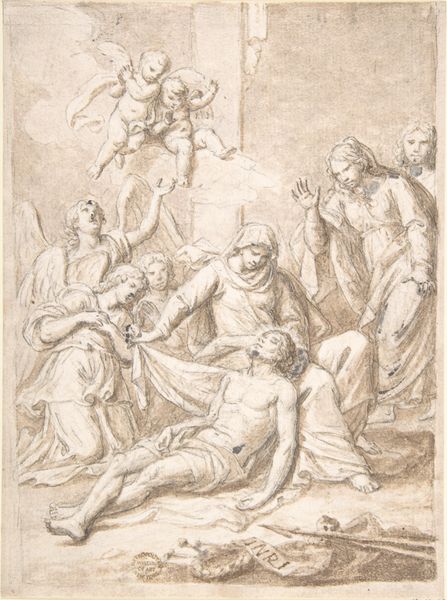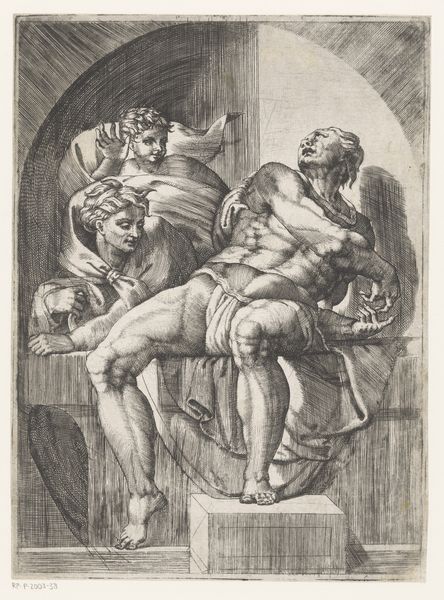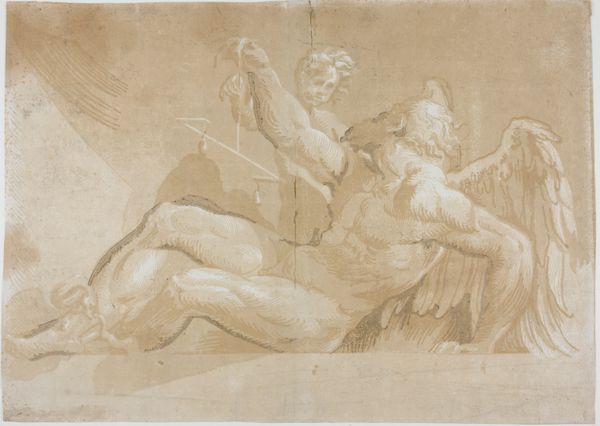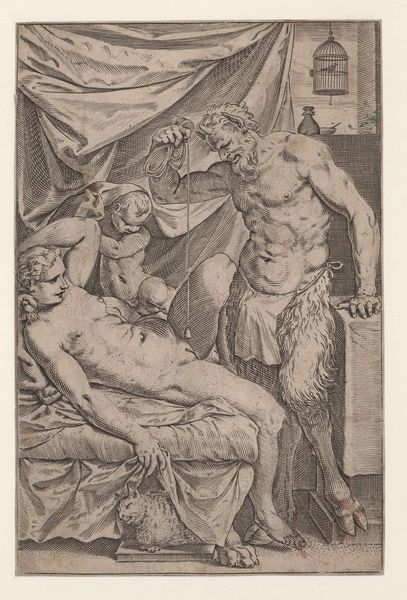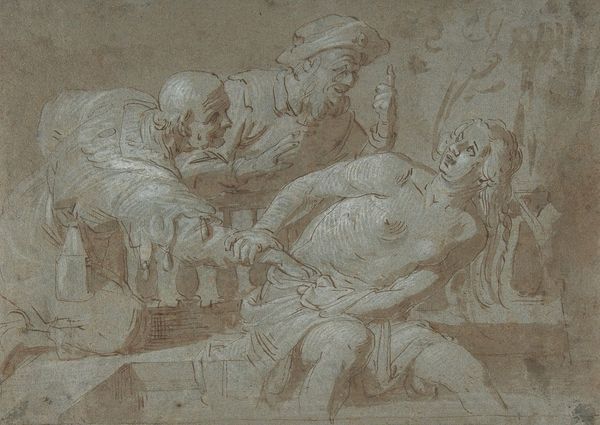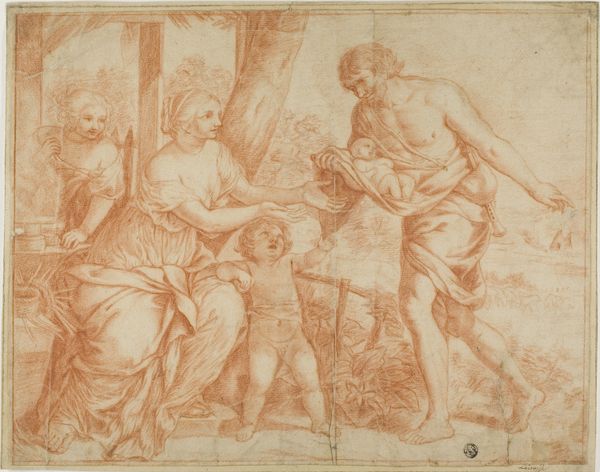
Adam and Eve after Their Expulsion with the Infants Cain and Abel 1639 - 1697
0:00
0:00
drawing, ink, pen
#
drawing
#
toned paper
#
narrative-art
#
baroque
#
figuration
#
ink
#
child
#
pen
#
genre-painting
#
history-painting
#
academic-art
#
italian-renaissance
Dimensions: 8 1/4 x 11 3/8in. (21 x 28.9cm)
Copyright: Public Domain
Editor: Here we have Giovanni Andrea Carlone's "Adam and Eve after Their Expulsion with the Infants Cain and Abel," created sometime between 1639 and 1697, using pen and brown ink, with white heightening, on toned paper. The figures appear very muscular, but also somewhat melancholy. What strikes you about it? Curator: The strength of the figures juxtaposed with the subdued medium immediately highlights the social narratives embedded within the work. This drawing exists, first and foremost, within the context of patronage. Carlone, working during the Baroque period, would have been keenly aware of the expectations of his audience, which greatly informs his imagery. The very act of depicting Adam and Eve, not in paradise, but *after* their expulsion speaks volumes. It shows us the impact that institutional powers – divine authority in this case – had on the everyday lives, even imagined ones, of the faithful. Editor: So the emotional state is less about individual suffering and more about the consequences of societal rules? Curator: Precisely. Consider how the depiction of labor, usually glorified, here carries a weight of divine punishment. Adam toils, Eve nurses – these are presented not as virtues, but as burdens. The muted tones further emphasize this somber societal condition, suggesting the dawn of a new, harsher social order imposed by divine judgment. Even the landscape, or lack thereof, subtly highlights the sense of a world deprived, barren both literally and metaphorically. Editor: It's interesting how much we can read into what's not there! Thanks, I see this with new eyes. Curator: Indeed. By analyzing these historical markers, we unlock a deeper understanding of both the artwork itself and the world in which it was produced and consumed. It reveals the potency of art as a tool for understanding and critiquing power dynamics.
Comments
No comments
Be the first to comment and join the conversation on the ultimate creative platform.
